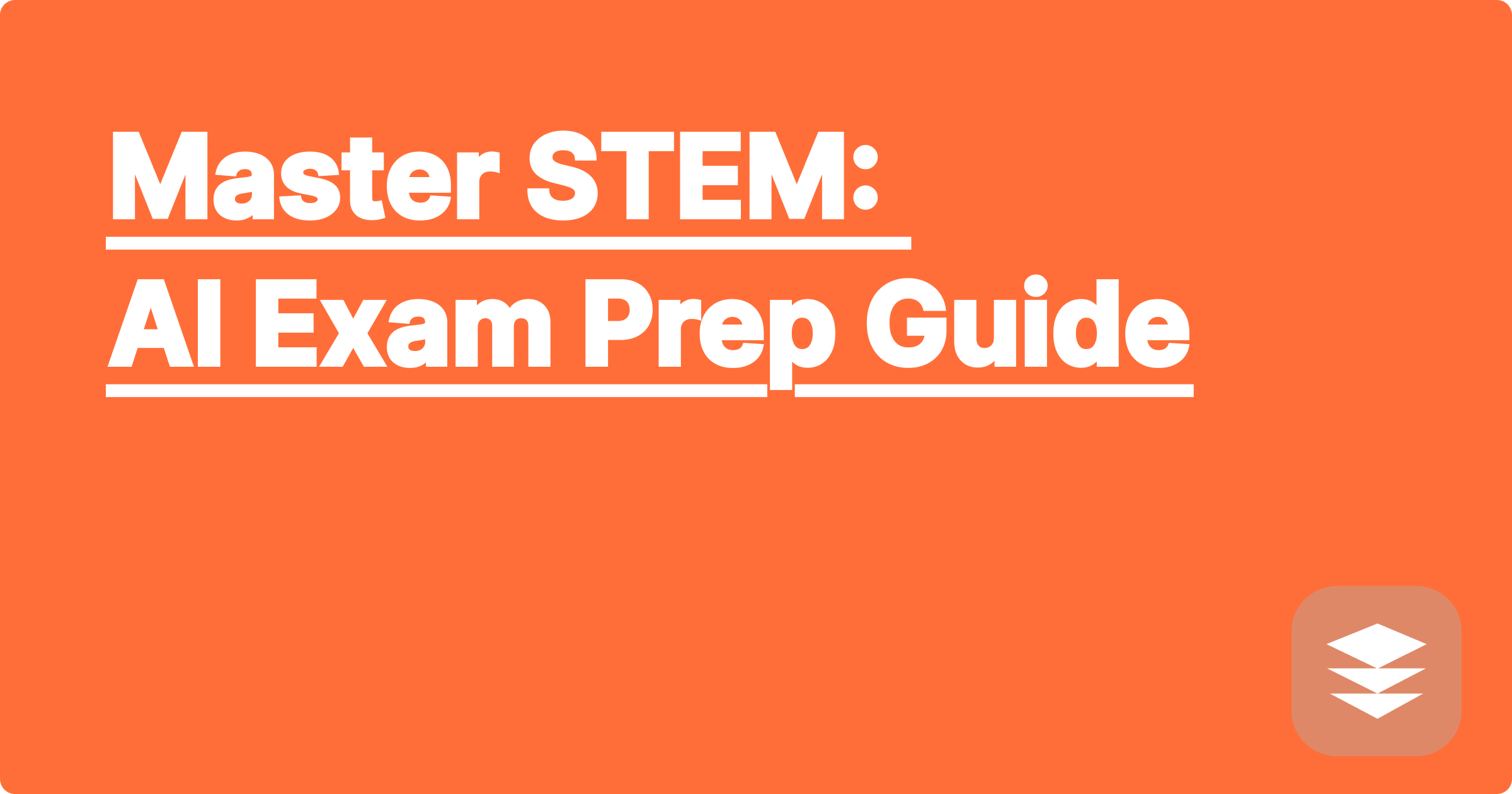
The rapid advancement of STEM fields presents a significant challenge for students and researchers: keeping up with the ever-expanding knowledge base and developing the skills to apply this knowledge effectively. Traditional learning methods often struggle to provide the personalized and adaptive support needed to navigate this complex landscape. Artificial intelligence (AI) offers a promising solution, providing powerful tools that can revolutionize how we approach learning, research, and exam preparation in STEM. AI can personalize learning experiences, offer on-demand tutoring, automate tedious tasks, and provide insightful analysis, ultimately empowering STEM professionals to excel in their fields.
This shift towards AI-powered learning is not just a trend; it’s a fundamental change in how we access and process information. For STEM students and researchers, understanding how to leverage these tools effectively is crucial for academic success and future career prospects. This guide will explore how AI can be used to prepare for STEM exams, providing practical strategies and real-world examples to help you master the material and achieve your academic goals. This is not about replacing traditional study methods, but rather augmenting them with the power of AI.
STEM exams often require a deep understanding of complex concepts, the ability to solve intricate problems, and the skill to apply theoretical knowledge to practical scenarios. Traditional study methods, such as reading textbooks and attending lectures, can be time-consuming and may not cater to individual learning styles. Students often struggle with identifying their knowledge gaps, prioritizing study materials, and practicing effectively for different exam formats. Furthermore, the sheer volume of information in STEM fields can be overwhelming, making it difficult to synthesize and retain key concepts. This information overload can lead to inefficient study habits and ultimately hinder exam performance.
AI tools like ChatGPT, Claude, and Wolfram Alpha offer a range of functionalities that can address these challenges. ChatGPT and Claude can be used for generating practice questions, explaining complex concepts in simpler terms, and providing personalized feedback on written answers. Wolfram Alpha excels at computational tasks, allowing students to quickly solve complex equations, visualize data, and explore mathematical concepts in an interactive way. By integrating these tools into your study routine, you can create a more efficient and personalized learning experience. These tools can act as virtual tutors, providing on-demand support and helping you identify areas where you need to focus your efforts.
Begin by identifying the key concepts and topics covered in your exam syllabus. Then, use ChatGPT or Claude to generate practice questions related to these topics. You can specify the difficulty level and format of the questions, tailoring the practice to your specific needs. As you work through these practice questions, use the AI tools to explain concepts you find challenging. Don't hesitate to ask follow-up questions and request different explanations until you grasp the material thoroughly. For subjects involving complex calculations or data analysis, Wolfram Alpha can be invaluable. Input the relevant equations or data into Wolfram Alpha to obtain solutions, visualize graphs, and explore different scenarios. This interactive approach can help you develop a deeper understanding of the underlying principles.
Consider a student preparing for a calculus exam. They could use ChatGPT to generate practice problems on integration techniques. If they struggle with a specific integration method, they can ask ChatGPT to explain the steps involved and provide additional examples. They can then verify their solutions using Wolfram Alpha, ensuring accuracy and reinforcing their understanding. In another scenario, a biology student could use ChatGPT to summarize complex biological processes like photosynthesis or DNA replication. They could then use Wolfram Alpha to visualize the chemical reactions involved and explore the effects of different variables. These practical applications demonstrate how AI can be used to enhance understanding and improve exam performance across various STEM disciplines.
To maximize the benefits of AI in your STEM studies, it's important to use these tools strategically. Don't rely solely on AI for learning; instead, use it as a supplement to traditional study methods. Actively engage with the material, asking questions and seeking clarification when needed. Experiment with different AI tools to find the ones that best suit your learning style and the specific requirements of your courses. Remember that AI is a tool, and its effectiveness depends on how you use it. By integrating AI thoughtfully into your study routine, you can create a more engaging and personalized learning experience, ultimately leading to improved academic performance.
Finally, remember that consistent effort and active learning are key to success in STEM. AI tools can provide valuable support, but they are not a replacement for hard work and dedication. Use these tools to enhance your understanding, identify your weaknesses, and practice effectively. By combining the power of AI with your own efforts, you can unlock your full potential and achieve your academic goals in STEM. Embrace the opportunities offered by these powerful tools and embark on a journey of continuous learning and improvement.
Ace STEM Exams: AI Study Planner
STEM Homework Solver: AI Assistance
AI for Lab Data: Analysis Made Easy
Master STEM: AI Exam Prep Guide
AI Coding Tutor: Debug Smarter
AI in Engineering: Boost Your R&D